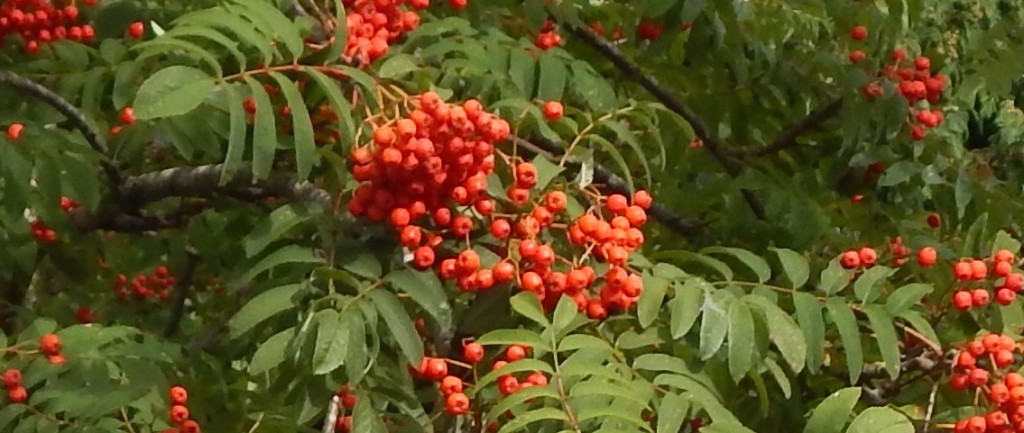
[321] Sorbus aucuparia, Rowan or Mountain Ash.
Introduction
There are many species within the genus Sorbus, subgenus Sorbus, with names that include ‘Rowan,’ ‘Mountain-Ash,’ or ‘Service Tree.’ The species Sorbus aucuparia is generally just called Rowan or Mountain-Ash (or Mountain Ash.) It is a familiar roadside tree with leaves like small versions of Ash tree leaves and it produces familiar bright red ‘berries.’
Many related species are also grown as ornamental trees in parks and gardens and roadsides.
They are not related to true [150] Ash trees or to Eucalyptus regnans, also sometimes called Mountain Ash
Taxonomy
Kingdom- Plants
Division – Vascular Plants
Class – Angiosperms (Flowering Plants)
Order – Rosales
Family – Rosaceae
Subfamily – Amygdaloideae
Tribe – Maleae
Subtribe – Malinae (Apples and others)
Genus – Sorbus
Subgenus – Sorbus
Scientific Name – Sorbus aucuparia and others
Name
‘Rowan’ comes, probably via Scottish, from Germanic roots cognate with ‘red.’
The name of these trees in Classical Latin was sorbus, of uncertain origins. This was borrowed in Old English as syrfe. Service-tree is derived from syrfe by the process where unfamiliar words are replaced by similar but unrelated words.
Aucuparia is derived from the Latin ‘avis-capere’ meaning bird-catch, from the use of its berries as bait to attract birds for shooting. (Remember that in real Latin there was no letter ‘U’ and ‘V’ was used where we now use ‘U’ or ‘V’.)
Description
It is difficult to find agreement on the precise definitions of species within the genus Sorbus. It has hundreds of species and its use as a cultivated fruit tree has led to many varieties and hybrids, including some hybrids between Rowans and [320] Whitebeams. Many of its species are sometimes considered to belong to other genera.
Sorbus domestica, the True Service-tree, is now very rare in the UK. Sorbus torminalis, the Wild Service-tree, does not have the Rowan leaf structure.
The Rowan (either Sorbus aucuparia or varieties of other species or hybrids) is a very close relative of the Whitebeam that we met yesterday, but its leaves are different in appearance. It is easily recognized by its leaf structure and berries that remain over winter.

They are seen often as an ornamental roadside tree, sometimes in rows along the pavement.
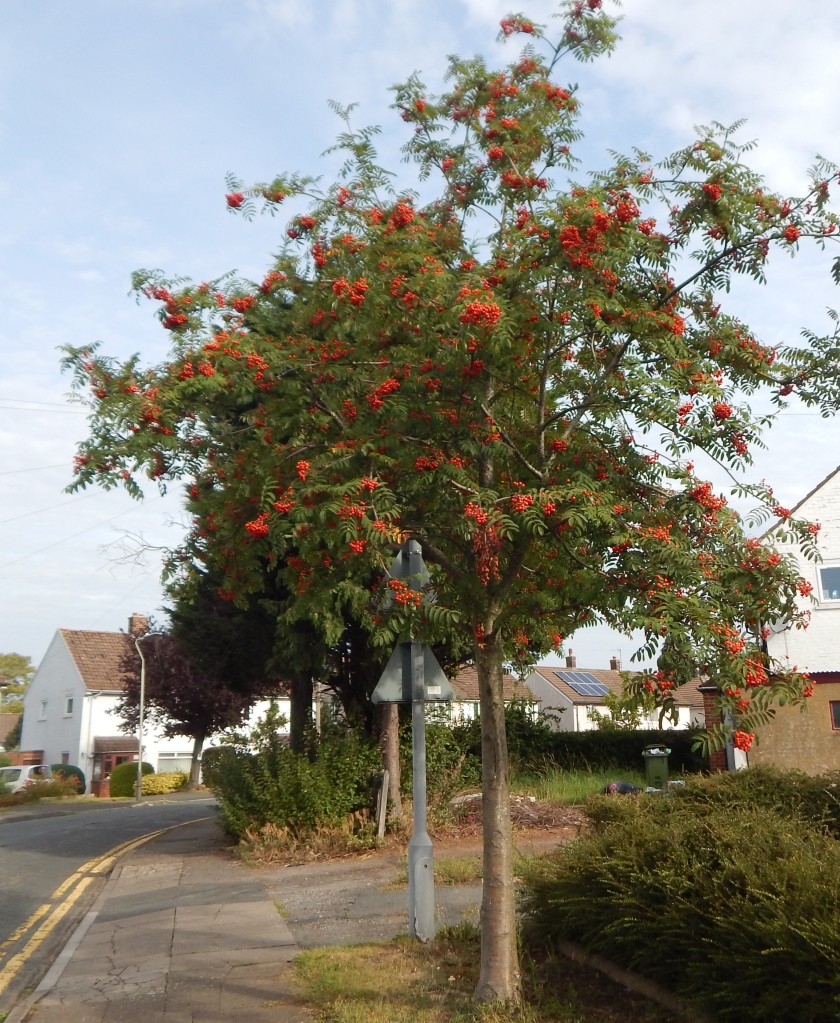


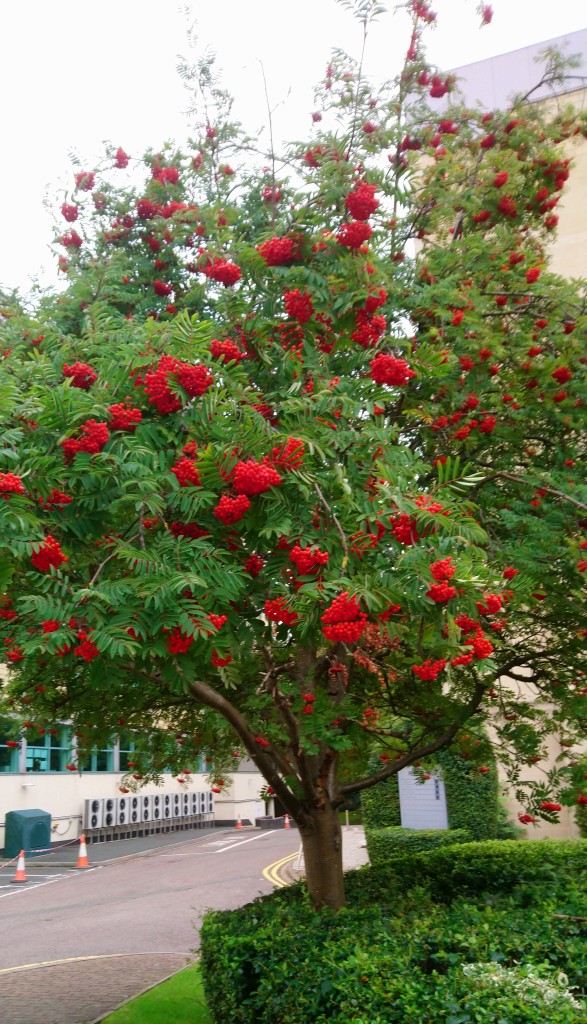
Its pinnate leaf structure is somewhat like the Ash tree but leaflets are notably smaller. The elongated leaflets are sharply serrated at their ends.
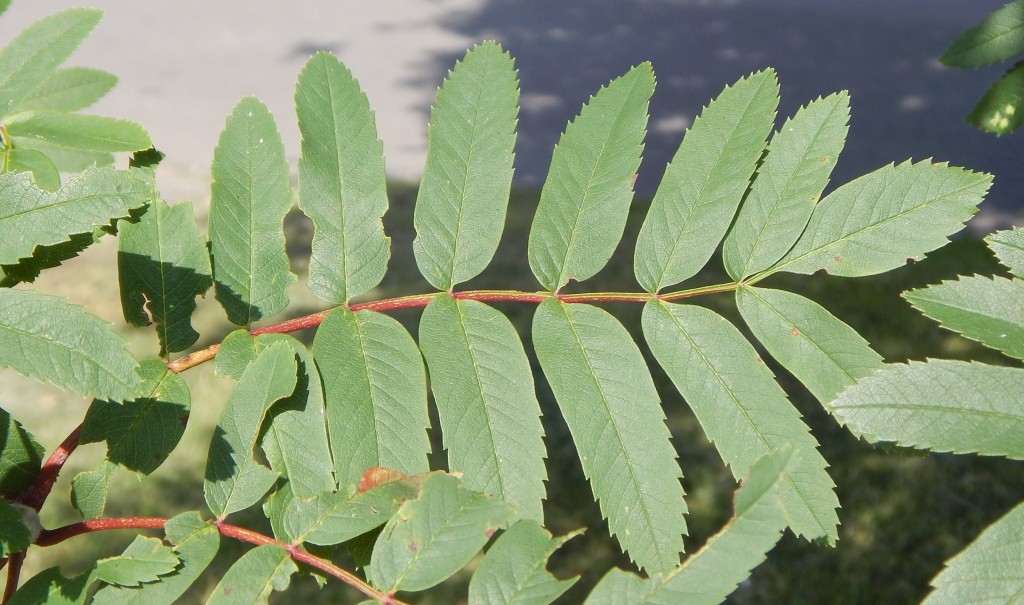
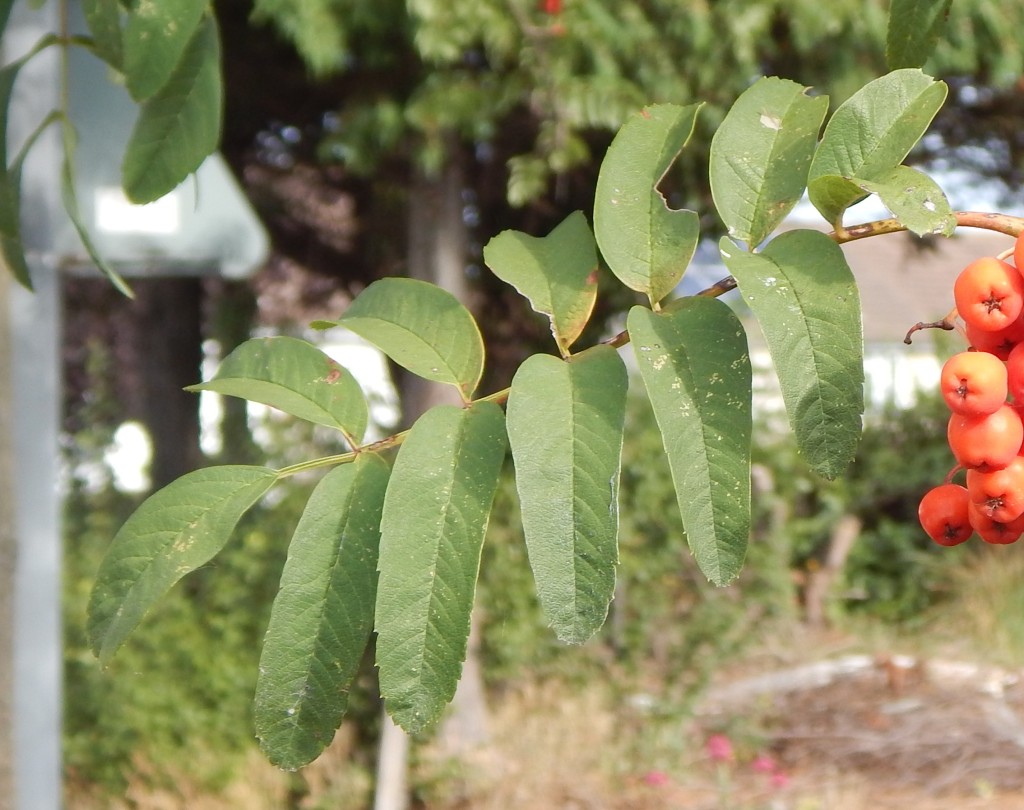

Small, open white flowers with prominent stamens come in tight inflorescences.

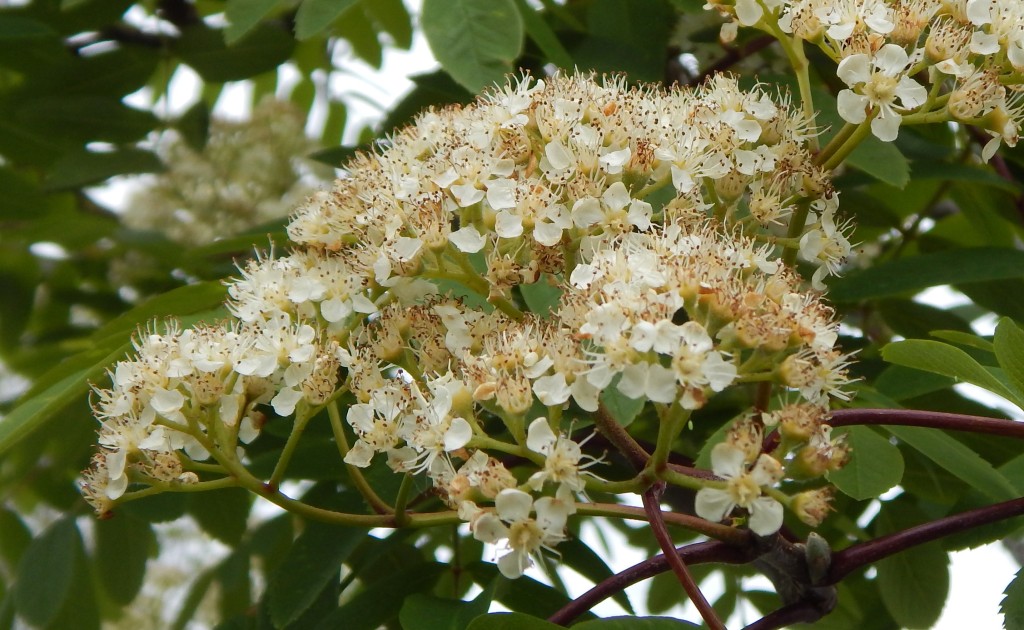
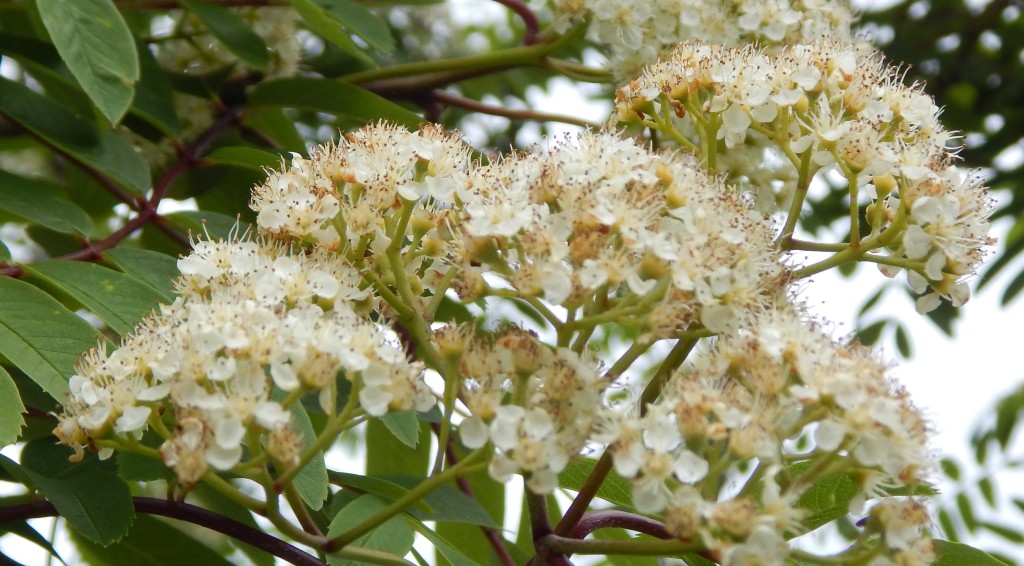
The fruits, like all members of the subtribe Malinae, are pomes, but most people would describe them as berries. While those of the Whitebeam may stay orange, those of the Rowan normally soon turn a bright red.
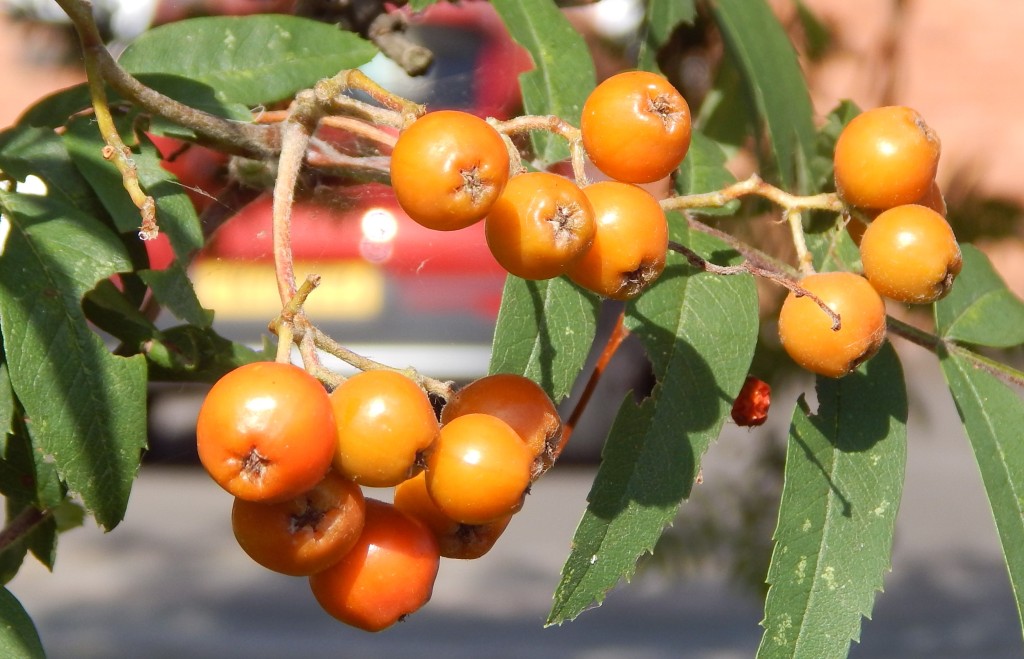

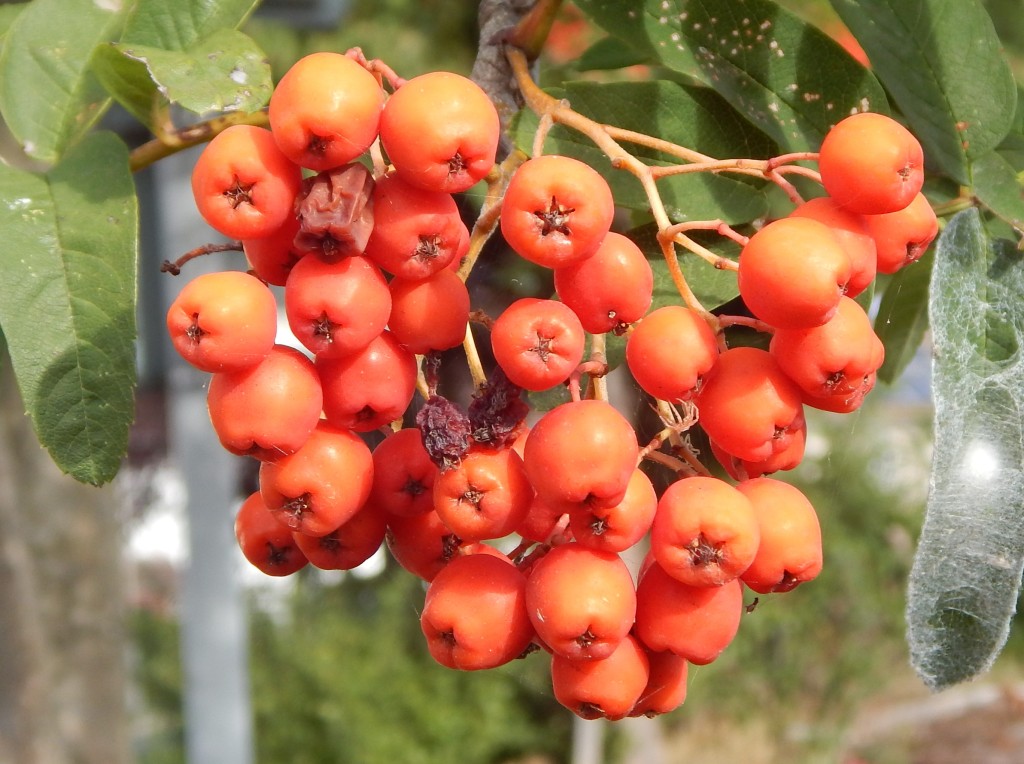



You can see the five-pointed stars, coming from the sepals of the flowers, that are distinctive with pomes.
Habitat and use
Sorbus aucuparia is found over most of Europe in five recognized subspecies.
Historically, the fruits of some Rowan trees have been eaten and trees have been cultivated for their fruit
Some Rowans may be seen wild in the countryside but most of them seen in parks and gardens and streets are cultivated varieties. They come from closely related species or hybrids or cultivars. Some varieties have fruits in other colours, including some two-tone fruits.
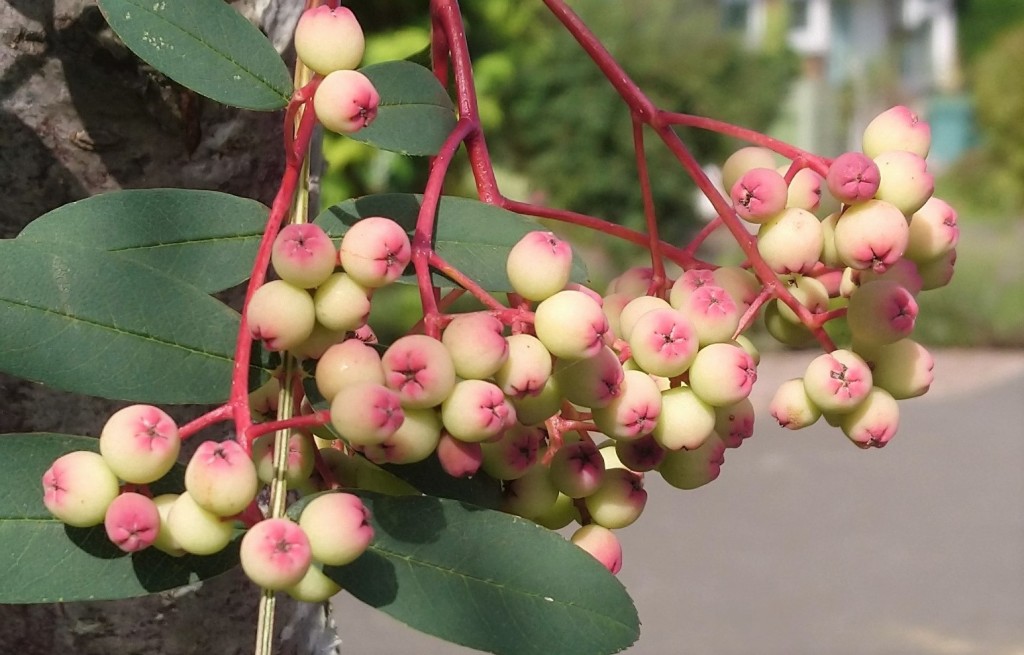


Other Notes
You can see why this is popular as a street tree. It has a compact form and doesn’t grow too large. The leaves, flowers and berries are all attractive and the berries persist through winter,
See also
Yesterday’s post about Whitebeam listed all the close relatives that we have covered.
